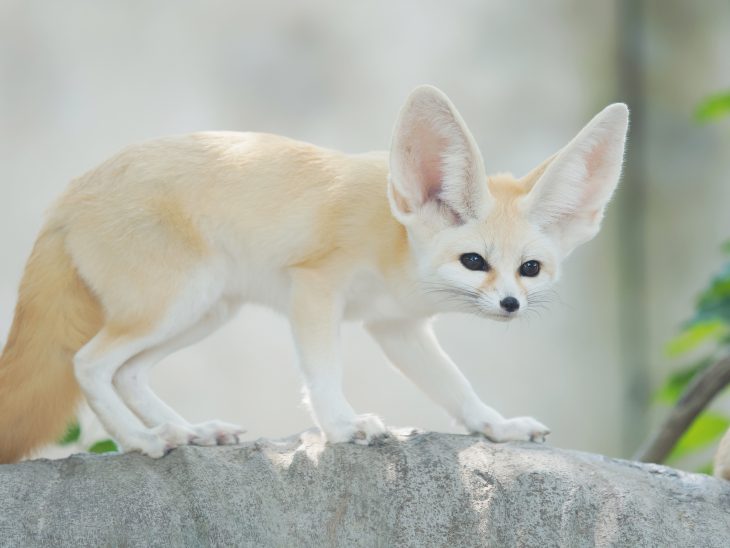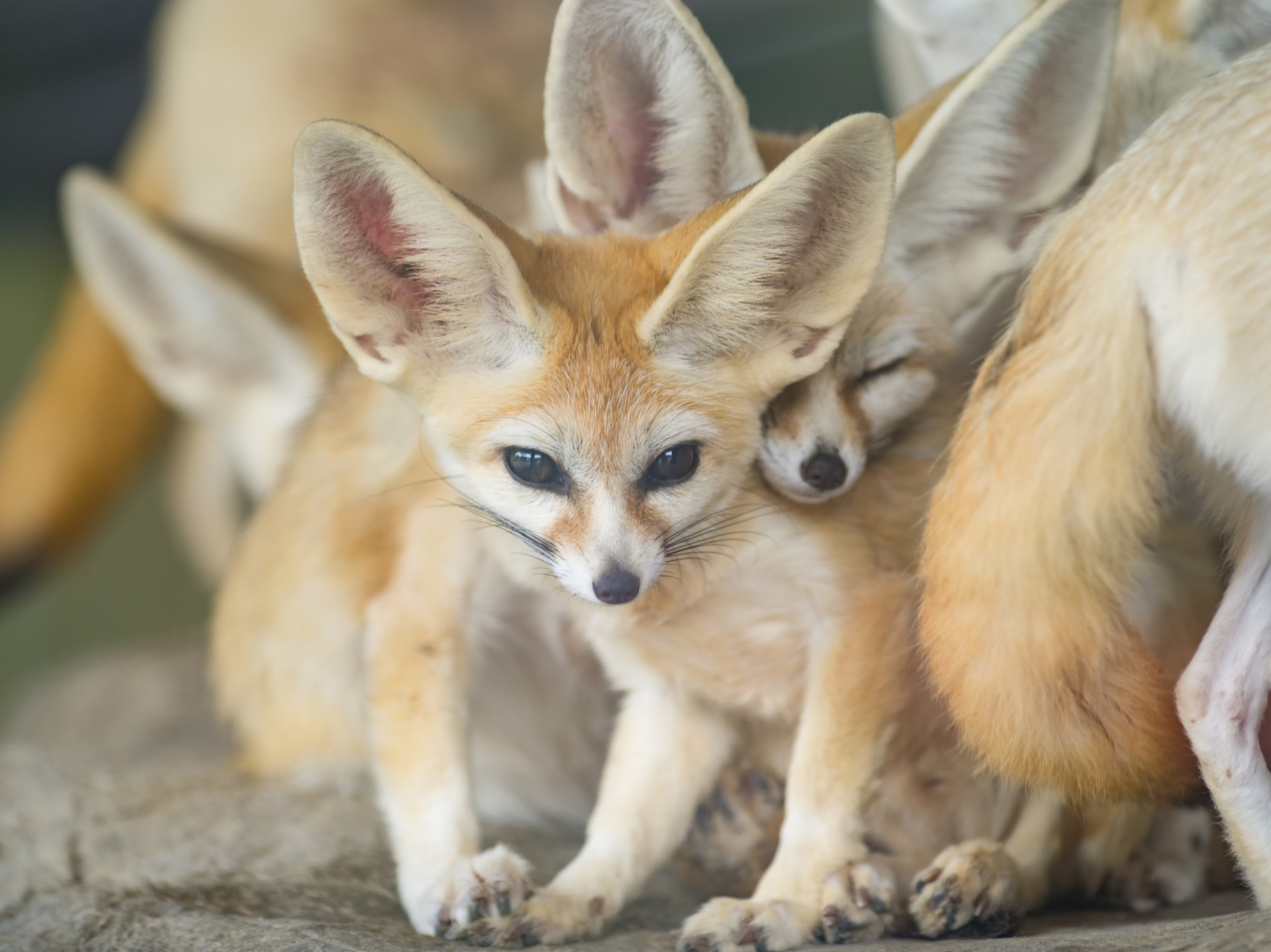
Are you ready to embark on a fascinating journey into the desert? Get ready to meet the enchanting fennec fox! These small, adorable creatures are native to the Sahara Desert and possess unique features that make them perfectly suited for their arid habitat. In this article, we’ll uncover 15 captivating facts about fennec foxes that will leave you in awe.
The Fennec Fox: An Introduction to Desert Royalty
The fennec fox (Vulpes zerda) is a petite fox species that calls the Sahara Desert its home. It’s the smallest fox in the world, with a distinct set of adaptations that help it thrive in the harsh desert environment. Let’s delve deeper into their remarkable characteristics.
A Playful Bundle of Fur
Fennec foxes are known for their cuteness overload! They have thick, creamy fur that serves multiple purposes. It helps them regulate body temperature, keeping them cool during scorching days and warm during chilly nights. Their fur also acts as camouflage, blending seamlessly with the sandy dunes.
Big Ears, Big Benefits
One of the most striking features of the fennec fox is its oversized ears. These remarkable ears, measuring around 6 inches long, serve various functions. They aid in dissipating heat, allowing the foxes to stay cool. Additionally, their exceptional hearing helps them detect prey underground, such as insects and rodents.
A Burrower Extraordinaire
Fennec foxes are exceptional diggers. They use their strong front paws and sharp claws to create elaborate burrows in the sand. These burrows not only provide shelter from the scorching sun but also offer protection from predators such as eagles and jackals.
Nighttime Wanderers
Fennec foxes are primarily nocturnal animals, which means they are most active during the night. This behavior helps them avoid the extreme daytime heat of the desert. When the sun sets, these little adventurers emerge from their burrows to hunt for food and explore their surroundings.

Master Jumpers
Despite their small size, fennec foxes are excellent jumpers. They can leap as high as three feet and as far as four feet, allowing them to catch prey and evade potential threats. Their powerful hind legs give them the ability to cover impressive distances in a single bound.
A Diet Fit for a Desert Connoisseur
Fennec foxes are omnivorous creatures with a varied diet. They feed on a range of food sources, including insects, rodents, birds, eggs, fruits, and vegetation. Their bodies have adapted to extract water from their food, minimizing their need for direct water intake.
Fantastic Family Dynamics
Fennec foxes live in small family groups consisting of a monogamous pair and their offspring. Both parents actively participate in raising their young, creating a strong bond within the family unit. The young ones learn essential survival skills from their parents, ensuring their success in the harsh desert environment.
Excellent Communicators
Fennec foxes have an intriguing way of communicating. They use a combination of vocalizations, such as barks, whines, and purrs, as well as body language to express themselves. These communication skills are crucial for social bonding, mating rituals, and establishing territories.
Masters of Temperature Regulation
Surviving in the scorching desert requires exceptional temperature regulation skills. Fennec foxes have specialized kidneys that allow them to conserve water efficiently. They can withstand high temperatures by releasing heat through their ears and panting, thereby preventing overheating.

The Art of Sand Dancing
Fennec foxes possess remarkable agility, making them excellent runners and climbers. Their nimble movements on the sandy terrain almost resemble a dance. They effortlessly traverse the dunes, showcasing their adaptability and grace in the unforgiving desert landscape.
Adaptations for Extreme Environments
Living in extreme environments requires special adaptations. Fennec foxes have fur-covered paws that protect them from the hot sand, allowing them to move comfortably without burning their feet. Additionally, their keen senses help them locate underground food sources, compensating for the scarcity of prey in the desert.
Natural Architects
The construction skills of fennec foxes are truly remarkable. They dig complex burrows that can extend up to 30 feet in length. These intricate networks consist of multiple chambers, including sleeping quarters, food storage areas, and even emergency exits. Such engineering ensures their survival and well-being in the harsh desert environment.
Fennec Fox Conservation
Fennec foxes face several threats, primarily due to habitat loss and illegal pet trade. Conservation efforts aim to protect their natural habitats, raise awareness about their importance in the ecosystem, and discourage the ownership of fennec foxes as pets. It’s crucial that we work together to ensure the survival of these magnificent desert dwellers.
Fennec Fox Fun Facts
To conclude our journey into the world of fennec foxes, let’s explore some fun facts about these adorable creatures:
- Fennec foxes have fur on the soles of their feet, acting as natural insulators.
- They have a lifespan of around 10 years in the wild.
- These foxes have a specialized adaptation that allows them to go for long periods without drinking water.
- Fennec foxes have been known to use their tails to cover their faces during sandstorms, protecting their delicate eyes and noses.
- Despite their small size, they can run at an impressive speed of up to 20 miles per hour.
Now that you’ve learned about the captivating world of fennec foxes, you’re well-equipped to appreciate their beauty and significance. These remarkable creatures teach us valuable lessons about resilience, adaptability, and the wonders of nature.
Frequently Asked Questions (FAQs)
Are fennec foxes endangered?
Fennec foxes are not currently classified as endangered. However, they are considered a species of least concern due to ongoing conservation efforts.
Can fennec foxes be kept as pets?
It is generally not recommended to keep fennec foxes as pets. They have specific needs and require a desert-like environment, which is challenging to replicate in a home setting.
How do fennec foxes tolerate extreme temperatures?
Fennec foxes have various adaptations, such as their large ears and specialized kidneys, which help them regulate body temperature and cope with the extreme heat of the desert.
Do fennec foxes hibernate?
Fennec foxes do not hibernate. They remain active throughout the year, adapting to the seasonal variations in their desert habitat.
Can fennec foxes be found in regions other than the Sahara Desert?
Fennec foxes are primarily found in the Sahara Desert, but they can also be found in other arid regions of North Africa and parts of the Middle East.
Was this page helpful?
Our commitment to delivering trustworthy and engaging content is at the heart of what we do. Each fact on our site is contributed by real users like you, bringing a wealth of diverse insights and information. To ensure the highest standards of accuracy and reliability, our dedicated editors meticulously review each submission. This process guarantees that the facts we share are not only fascinating but also credible. Trust in our commitment to quality and authenticity as you explore and learn with us.
